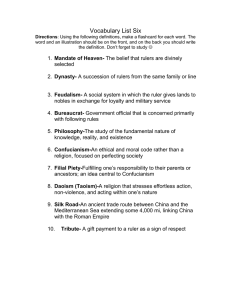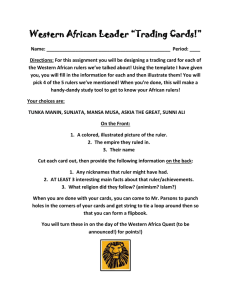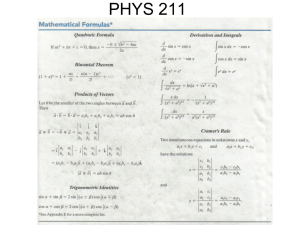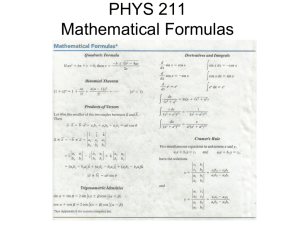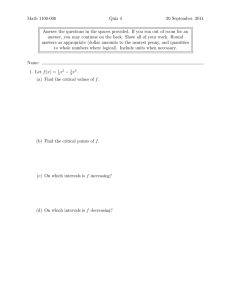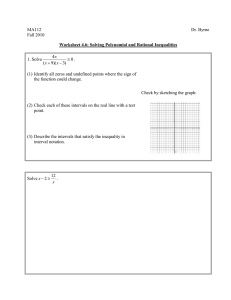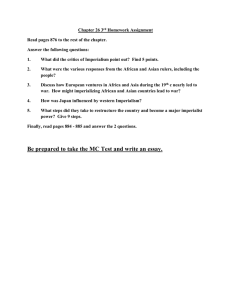EAS 490: Metre rules and rulers for school and office use
advertisement
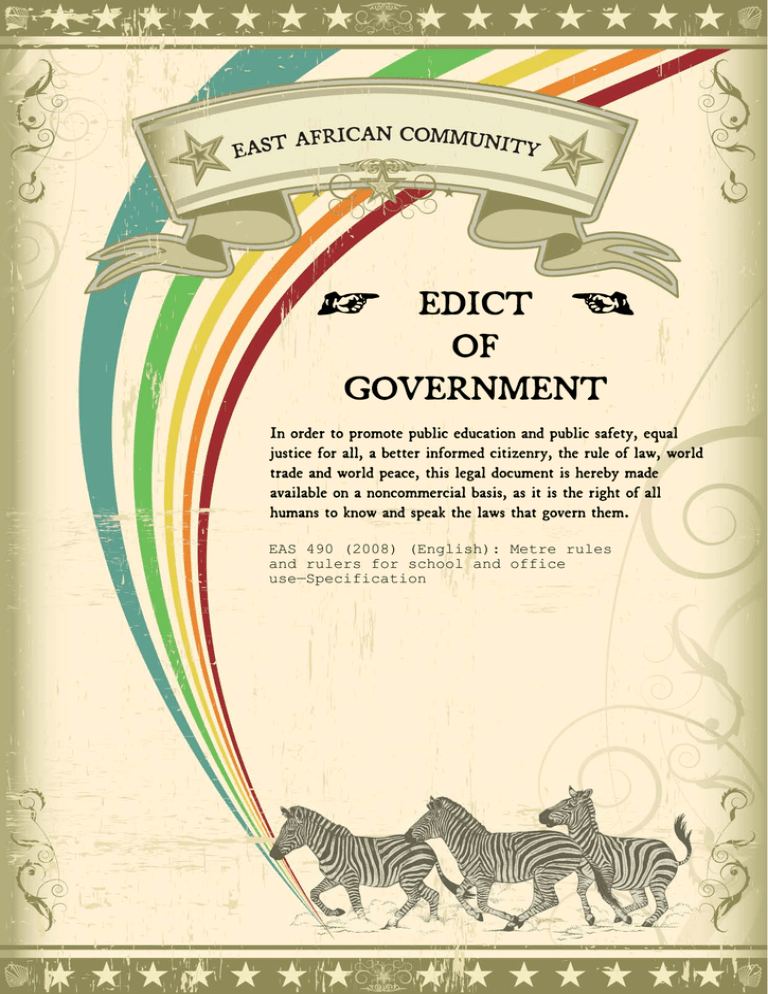
≠ EDI CT ± OF GOVERNMENT I no r d e rt op r o mo t ep u b l i ce d u c a t i o na n dp u b l i cs a f e t y ,e q u a l j u s t i c ef o ra l l ,ab e t t e ri n f o r me dc i t i z e n r y ,t h er u l eo fl a w,wo r l d t r a d ea n dwo r l dp e a c e ,t h i sl e g a ld o c u me n ti sh e r e b yma d e a v a i l a b l eo nan o n c o mme r c i a lb a s i s ,a si ti st h er i g h to fa l l h u ma n st ok n o wa n ds p e a kt h el a wst h a tg o v e r nt h e m. EAS 490 (2008) (English): Metre rules and rulers for school and office use—Specification EAS 490:2008 ICS 83.140.99; 97.180 HS 9017.80.00 EAST AFRICAN STANDARD Metre rules and rulers for school and office use—Specification. EAST AFRICAN COMMUNITY ©- EAC 2004 First edition 2004 EAS 490:2008 Foreword Development of the East African Standards has been necessitated by the need for harmonising requirements governing quality of products and services in East Africa. It is envisaged that through harmonised standardisation, trade barriers which are encountered when goods and services are exchanged within the Community will be removed. In order to achieve this objective, the Partner States in the Community through their National Bureaux of Standards, have established an East African Standards Committee. The Committee is composed of representatives of the National Standards Bodies in Partner States, together with the representatives from the private sectors and consumer organisations. Draft East African Standards are circulated to stakeholders through the National Standards Bodies in the Partner States. The comments received are discussed and incorporated before finalisation of standards, in accordance with the procedures of the Community. East African Standards are subject to review, to keep pace with technological advances. Users of the East African Standards are therefore expected to ensure that they always have the latest versions of the standards they are implementing. © East African Community, 2003 East African Community P O Box 1096 Arusha Tanzania E-Mail: eac @eachq.org ISBN EAST AFRICAN STANDARD EAS 490:2008 Metre rules and rulers for school and office use—Specification 1 Scope This East African Standard specifies requirements for metre rules and rulers for school and office use. 2 Requirements 2.1 Types 2.1.1 Metre Rules All metre rules shall be rectangular cross section and shall be of one of the following types ( see figure 1): Type 1 – A rule 1 m long, 25 mm wide and 5 mm thick, with the ¼ , ½ and ¾ length indicated by lines across one face only. No figures. Type 2 – A rule 1 m long, 25 mm wide and 5 mm thick, graduated and numbered at centimeter intervals from 1 to 99 with graduation lines running across the width of the rule but broken at the centers to take the numbering, with minor graduation marks at 5 mm intervals on each side of the rule, with the figure 10 and multiple thereof marked boldly, with the letter ‘cm’ hard up against the left-hand side of the rule and with ‘1 m’ hard up against the right side edge of the rule, in line with the numbers. Type 3- rule 1 m long, 25 mm wide and 5 mm thick graduated and numbered at 10 mm intervals from 10 to 990 with graduation lines running across the width of the rule but broken at the centers to take the numbering, with graduation marks on the lower edge at 1 mm and 5 mm intervals, with the letters ‘ mm’ hard up against the left hand side of the rule, and with ‘ 1 m’ hard up against the right hand side of the rule, in line with the numbers. The application of colour to some spaces on the rules is permissible. 2.1.2 Rulers Rulers shall be of any of the following types ( see figure 1): Type 1- A ruler 300 mm long plus ends, beveled edges, 25 mm x 3 mm 0r 30 mm x 3 mm cross – section between bevels. One edge of the ruler to be marked and numbered at centimeter intervals from 1 cm to 30 cm, with additional marking at 1 mm and 5 mm intervals, with the letters ‘cm’ in the zero mark position. When turned end for end, the other side of the ruler shall be marked similarly or numbered at 10 mm intervals from 10 mm to 300 mm with additional markings at 5 mm intervals with the letters ‘ mm’ in the zero mark position or marked and numbered at 1 inch intervals from 1 in to 12 in, with additional marking 1/16, 1/8 and ½ in intervals with the name ‘inch’ in the zero position mark. Type 2 – a ruler 150 mm long plus ends, beveled edges, 28 mm x 3 mm or 30 mm x 3 mm crosssection between bevels. One edge of the ruler to be marked and numbered at centimeter intervals from 1 cm to 15 cm , with additional markings at 1 mm and 5 mm turned end for end the other edge of the ruler shall be marked similarly or numbered at 10 mm intervals from 10 mm to 150 m, with additional markings at 5 mm intervals with the letters ‘mm’ in the zero mark position or marked and numbered at 1 inch intervals from 1 into 6 in with the name ‘inch’ in the zero position mark. ©- EAC All rights reserved 1 EAS 490:2008 2.2 Tolerance Rulers shall have the following dimensional tolerance for the width, central and bevel thickness: a) Plastic rulers and printing on the top width, ± 51 Central thickness, above 2.5 mm. Bevel thickness, 1 mm to 2 mm. b) Plastic rulers and printing underneath Width, ± 51 mm. Central thickness, above 2.5 mm. Bevel thickness, 1 mm to 2 mm. c) Wooden rulers Width, ± 1 mm. Central thickness, 4 mm minimum. Bevel thickness, 2.5 ± 0.5 mm. 2.3 Accuracy For Rules And Rulers 2.3.1 Edges- The degree of accuracy of the straightness of the edges shall be within 0.25 mm in 300 mm. 2.3.2 Markings – The degree of accuracy of the spacing of the markings shall be within 0.75 mm in 300 mm, and within 0.25 mm in any 25 mm of length . 2.4 Dimensions and graduation lines The dimensions shall be as given in Figures 1 and 2. The length from the edge inwards of the lines where not taken fully, across the face shall be approximately as shown in figures 1 and 2. The lines shall be such as to give clarity in reading and enable the different lengths of line to be easily distinguished. Table 1 is an approximate guide. The graduation lines shall be of contrasting colour from that of the base material . TABLE 1 LENGTH OF GRADUATION LINES TYPE OF LINE (mm) 1 5 10 LENGTH OF LINE ON RULE OR RULER Minimum (mm) Maximum (mm) 3 4.75 4 5.5 4 7 2.5 Materials 2.5.1 Timber Metre rules and rulers should preferably be made of box wood. If boxwood is not used, other timbers which have the physical characteristics specified for other materials in clause 2.5.2 and which satisfy the requirements in clause2.7 and have a hardness of surface comparable with boxwood such as s ramin, maple, birch, sycomore, holly and dagame may be used. All timber used shall have a normal moisture content not higher than 10 per cent and shall be free from objectionable blemishes such as knots, pin worm holes, splits, checks and discoloration . ©- EAC All rights reserved 2 EAS 490:2008 2.5.2 Other materials- Plastics* or materials other than timber shall be of adequate rigidity and free from embrittlement. The finished rules an rulers shall be flat and shall remain sufficiently so under normal use as to continue to be serviceable. They shall not be highly flammable, nor dangerously toxic, and shall be comparable in durability and flatness to a boxwood article. 2.6 Finish The finish for timber shall have a matt or semi gloss surface or a hard yet resilient nature and shall not be dangerously toxic. 2.7 Warping and twisting A rule or ruler shall show no undue signs of twisting or warping, that would render it unusable after being conditioned for 48 hours in an atmosphere of 80 per cent relative humidity at 20o C. 3 Marking Rulers and rules shall be marked indelibly with the following information: i) Name and / or registered trade ii) Country of manufacture/origin • The following plastic materials may be suitable: Cellulose, acrylics, polystyrene, ABS ( acrylonitrile butadiene styrene) PVC (Polyvinyl choride) or CAB ( cellulose acetate butyrate). 2 EAS 490:2008 Figure 1: ©- EAC All rights reserved 2
